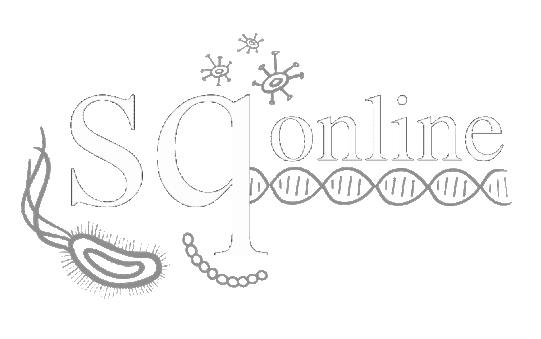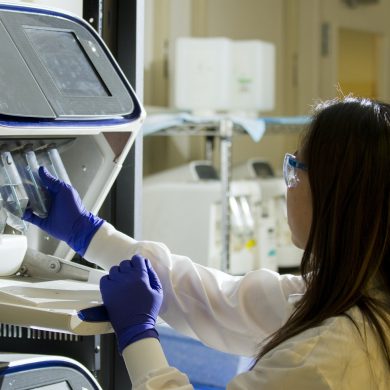Introduction
From Sierra Nevada lakes beneath the hearths of mountains to sediment swirling along the seabed, aquatic ecosystems pool with life. Human interventions thrust these systems into peril. Deep sea environments marred by chemical pollution may take further damage from proposed deep sea mining and marine carbon dioxide removal initiatives. Underwater sounds from offshore wind farms, naval sonar, and seismic surveys block echolocation signals and deafen marine mammals. Meanwhile, in high-elevation lakes, newly introduced species and excess nutrients threaten lakebed communities.
Ill-advised human activities create barriers to aquatic ecosystem cohesion, presenting potentially catastrophic consequences for even the most remote bodies of water. At UC San Diego, researchers at the Levin, Shurin, and Scripps Acoustic Ecology labs examine these aquatic human-system conflicts and advise more mindful policies.
Breathing Oxygen into the Deep Sea
At the Levin Lab, part of the Integrative Oceanography Division at Scripps Institution of Oceanography, the mysteries of the deep sea come to light, one sample and one observation at a time. Led by Dr. Lisa Levin, the team explores the vast, largely uncharted ecosystems of the deep ocean. Among these are methane seeps, where escaping methane creates and sustains unique habitats that support deep-sea ecosystems. By studying these environments, researchers can gain insight into how human activities, such as deep-sea mining and climate change, impact fragile marine life.
Through meticulous sampling of sediment, rock, and marine life, the team investigates deep-sea ecosystems. By transplanting materials like bones and wood into methane seeps, they examine how specialized organisms colonize and break them down, revealing intricate symbiotic relationships and metabolic pathways that allow life to adapt and thrive in extreme environments.
Observations of these processes, alongside natural gradients in oxygen, depth, and temperature, offer valuable clues about the resilience and vulnerability of marine communities to future climate conditions. The team also investigates oxygen-depleted ocean regions that endanger most marine organisms. Using cutting-edge tools like remotely operated vehicles and human-operated submersibles, the lab gathers data that not only illuminates the deep sea’s vibrant biodiversity, but also highlights its fragility in the face of human impact.The research holds a crucial message: the deep sea is not a uniform void but a mosaic of unique habitats, each finely tuned to its environment and highly vulnerable to disruptions. A major focus of the lab’s research is the impact of ocean acidification and deoxygenation, two significant consequences of human activity that threaten deep-sea life. Ocean acidification, caused by the absorption of excess carbon dioxide, lowers seawater pH and disrupts the formation of calcium carbonate, a compound essential for species like mussels, crabs, and squid to build their shells and skeletons. Deoxygenation, driven by warming waters and pollution, further reduces oxygen availability, making survival in already low-oxygen environments even more challenging. To understand these effects, the team conducts experiments on larvae and embryos of affected species, exposing them to varying levels of salinity and temperature. These studies have revealed developmental abnormalities, such as impaired organ formation and reduced survival rates under stress conditions, offering crucial insight into how deep-sea organisms may struggle to adapt. The lab also identifies critical habitats known as Vulnerable Marine Ecosystems (VMEs), which are protected under international agreements. These habitats, sustained by corals, sponges, and other species indicative of ecosystem health, are vital for supporting marine biodiversity and fisheries. Dr. Levin emphasizes that conserving these ecosystems isn’t just about preservation–it’s about securing the future of the oceans and the countless species that depend on them, including us.
Oceans Alarm: Clicks and Beeps
Another threat facing a different set of undersea organisms looms leagues above the deep sea. Sound travels faster and farther in water than in air, making it marine mammals’ favored communication strategy. Unfortunately, humans have unintentionally converted sound into a weapon. Short, intense noises, like those produced by naval sonar, elicit fearful behaviors in whales and porpoises. These man-made sounds can kill–medical examinations have reported brain bleeding in beached porpoises after nearby seismic surveys. Less severe instances of this phenomena can induce behavioral changes in marine mammals, including the elimination of hunting and calling. Understanding how marine fauna use sound in their environments helps researchers illustrate the disruptive impacts of anthropogenic noise on these precious spaces.
At the Scripps Acoustic Ecology Lab (SAEL), Dr. Alba Solsona-Berga uses specialized microphones called hydrophones to listen to underwater soundscapes across the globe. Interested in studying marine mammal movement and behavior, Dr. Solsona-Berga triangulates sources for sounds by fastening four hydrophones together; this creates a 3D map of her subject’s activity. Machine learning engines model the hydrophone’s data by sorting its sound sources into species, depth, and temperature categories. With over 5 terabytes of data and recordings dating back to 2007, Dr. Solsona-Berga’s work pioneers bioacoustics research.
The SAEL collaborates with policymakers, the U.S. Navy, and energy companies to assess and infer the impacts of anthropogenic disturbances on marine life. Dr. Solsona-Berga’s hydrophones capture snapshots of life at proposed wind farm and seismic survey sites, modeling a baseline “normal” soundscape. Project managers assess these models to determine appropriate procedures to minimize their developments’ impacts on any at-risk species present. Dr. Solsona-Berga’s work allows companies and developers to anticipate and alleviate the noisy consequences of their plans for marine life.
Sometimes, Dr. Solsona-Berga’s work isn’t able to establish a baseline before tragedy strikes. Since just after the 2010 Deepwater Horizon oil spill, Dr. Solsona-Berga’s hydrophones have monitored animal behaviors in the Gulf of Mexico. Dr. Solsona-Berga’s data demonstrates a 14-year decline in species density in the region following the disaster. In order to advocate for legislation for the protection of this vulnerable area, Dr. Solsona-Berga anticipates using her library of behaviors to prove that the decline has been caused by an unnatural disturbance. Without baseline data from before the spill, Dr. Solsona-Berga continues monitoring to capture future trends that may help advise policymakers.
In the Footprints of Glaciers
Inland from the Pacific, human activities pose different consequences for isolated Sierra Nevada lakes. Farm runoff and rainfall oversaturate lakes with nutrients, resulting in the unhealthy overpopulation of their algal communities. Humans also impact lakes by introducing non-native trout for fly-fishing. Trout consume the lakes’ larger zooplankton, disrupting the food chain and leaving opportunities for algae and phytoplankton producers to overpopulate. Trout also eat the eggs and tadpoles of the endangered Sierra Nevada yellow-legged frog, a species already endangered by an ongoing outbreak of the deadly chytrid fungus.
Within UC San Diego’s Ecology, Behavior, and Evolution department, Dr. Jonathan Shurin researches the changing population dynamics between 21 Yosemite lakes, sampling the elevation, temperature, and chemical properties of each lake yearly. The Shurin Lab observed that fish inhabiting warmer, lower elevation lakes tip the food chain in favor of producers like algae and away from prey like tadpoles, large zooplankton, and crustaceans. In colder, higher elevation lakes, these effects are less evident: while fish still prey on larger zooplankton, cooler aquatic temperatures inhibit the growth of phytoplankton and algae.
The Shurin Lab anticipates the potential of local climate warming trends to the warm-water producers. Warming temperatures across the Sierra Nevada range speed up the decomposition of plants and soil in lakes, resulting in increased concentrations of organic matter, or Dissolved Organic Carbon (DOC). Increasing DOC darkens lakes, reducing plankton’s ability to absorb sunlight. The Shurin Lab assesses plankton communities with nets and water samples, sorting out their species makeup. The lab then compares each species’ abundances with the temperatures, DOC contents, elevation, and nutrient compositions of each lake. These comparisons help Dr. Shurin assess whether the same species can adapt to changing local conditions between different interconnected lake populations. As temperatures warm and lake conditions fluctuate, this plasticity in temperature preference may keep lakes biodiverse.
Pollution, climate change, and invasive trout introductions make Yosemite and its slice of the Sierras a hotspot for research attention. Dr. Shurin and his team anticipate studying their lakes for another decade, uncovering ways that remote aquatic communities react to inadvertently induced habitat changes. Bridging the gap between human ambitions and ecological integrity, Dr. Shurin, Dr. Solsona-Berga, and Dr. Levin strive to ensure these vital ecosystems thrive for generations to come.


